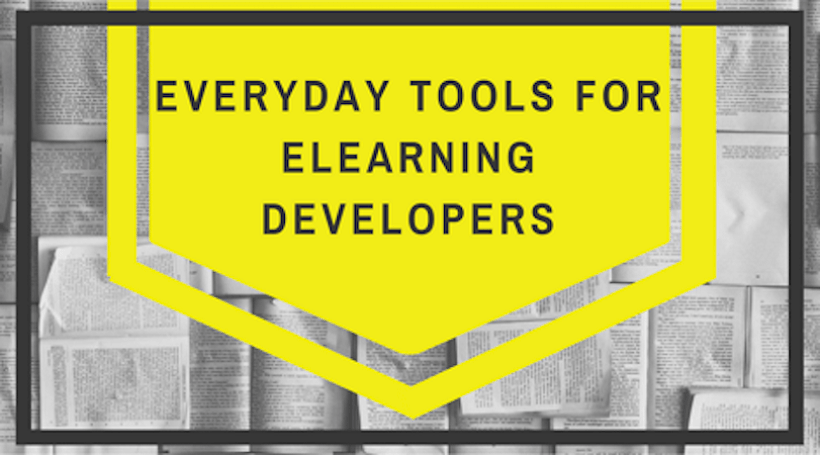How To Use An eLearning Project Management Platform In Online Training
eLearning teams often use eLearning Project Management platforms to centralize communications and collaborate from across the globe. It helps them keep the development timeline on track and provide immediate feedback. But is there a place for eLearning Project Management tools on the front-end of your online training program? Can it help your employees build vital skills and facilitate real-world application? Below are 7 unconventional ways to incorporate an eLearning Project Management platform into your online training strategy.
1. Multiphase Group Collaboration Projects
Most eLearning Project Management platforms are equipped with timelines so that you can track projects and milestones. Develop a multiphase group collaboration project that capitalizes on this feature and encourages corporate learners to build time management skills. For example, the group must work together to produce an online training module. Every phase of the project involves a different section of the deliverable, which they need to complete before the deadline.
2. Learner-Generated Libraries That Provide Moment Of Need Support
An eLearning Project Management platform not only facilitates remote collaboration but also serves as a centralized storage location. Thus, employees can use the tool to create online training resources to expand the moment of need library and upload it for the benefit of their peers. In turn, co-workers have the opportunity to provide feedback and access the moment of need library to bridge personal gaps. You can even keep a running list of topics or tasks that have already been covered to avoid redundancies.
3. Training Community Calendars To Provide Real-Time Updates
Create a community calendar in the eLearning Project Management platform to keep employees updated on new online training courses, deadlines, and other important dates. You can also use the calendar feature to post a daily prompt, question, or tip that employees may find useful. For example, ask a thought-provoking question that gets them thinking about the upcoming compliance online training course, or a link to the ‘sneak preview’ of the serious game you’re currently working on for the sales online training course. A community calendar gets employees actively involved and enthused about future online training opportunities.
4. Real-World Simulations With Tight Deadlines And Limited Resources
Instead of virtual simulations, invite employees to work with remote peers and experience it firsthand. Provide them with a problem or challenge they must collectively resolve. For example, they must use the available resources to devise a plan to reduce compliance violations or improve customer service satisfaction scores. These simulations should also involve tight deadlines to mimic real-world pressures. You can use the timed task or calendar feature to help them keep an eye on the clock.
5. Group Feedback Sessions
Encourage employees to upload their own content to the eLearning Project Management platform and then solicit peer-based feedback. You can also host feedback sessions of your own regarding the online training program. Think of it as an informal focus group where employees can share their thoughts and opinions remotely. Another great way to use eLearning Project Management platforms to get employees involved and benefit from their insights is to host brainstorming sessions. Invite a select group of corporate learners to exchange ideas regarding the proposed topic or challenge. They can even share resource links and upload supporting documents, as well as schedule follow-up meetings to further discuss the topic after conducting more research on their own.
6. Mock Business Projects To Build Teamwork Skills
Give employees virtual funds and outline the project scope. Then let them use the eLearning Project Management platform to build teamwork skills and complete the assignment. As an example, the team must launch a fictional marketing campaign and have a $5,000 fictional budget. They need to appoint a leader who will delegate the tasks and assign roles. Thereby, improving communication, interpersonal, and time management skills. Upon completion, the group shares their finished product or findings with their peers, who are able to evaluate the project and how effectively they allocate resources and managed the team’s talents.
7. Break Long-Term Goals Into Manageable Timelines And Tasks
Another great way to use the timeline and calendar features is to manage long-term goals more effectively. A common misconception regarding eLearning Project Management platforms is that they’re solely for team use. However, individual corporate learners can have their own private sections to improve productivity and training performance. For example, they’re able to break the L&D objectives into short-term goals and tasks, then use the tool to monitor their progress and see which assignments are still on their to-do lists. Employees are motivated to achieve their goals because they can see how far they’ve come, as well as focus on the long-term learning objectives and the benefits they’ll receive for their efforts.
Tip To Choose The Right eLearning Project Management Platform For Your Online Training Course
The first step to selecting an eLearning Project Management platform that suits your needs is to define its purpose. How does it fit into your online training strategy and how will it help employees achieve their learning objectives? This allows you to identify which features you need to improve ROI and accommodate every member of your team. You can also ask your L&D team for input, as they’re probably already using an eLearning Project Management tool for in-house development. Which tools have they used in the past and what are the pros/cons of the current platform?
eLearning Project Management platforms facilitate group collaboration and remove geographical barriers. However, you need to choose the right tool for the task to get the best value for money. Research the options to find a solution that not only fits into your price range but also matches your team’s talents. For example, a user-friendly platform with an intuitive dashboard is ideal for those with limited tech know-how.
Are you interested in being an eLearning Project Manager but aren’t sure what the role entails? How exactly do you plan a successful eLearning project from day one? Download the eBook Top Tips To eLearning Project Management And Planning and discover the characteristics of a successful eLearning team and how to improve online collaboration in eLearning projects.








